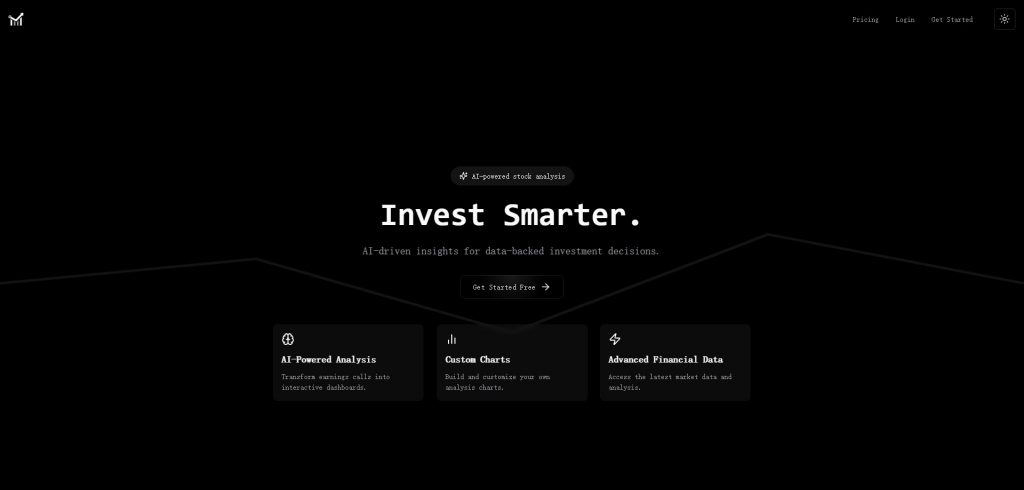20 Top Tips For Choosing copyright Ai Stocks
20 Top Tips For Choosing copyright Ai Stocks
Blog Article
Top 10 Tips For Automating Trading And Monitoring Regularly Of Trades In Stocks, Ranging From Penny Stocks To copyright
Regular monitoring and automation of AI stock trades are crucial to maximize AI trading, particularly when dealing with volatile markets like penny stocks and copyright. Here are 10 suggestions for automating trades and keeping track of your performance on a regular basis.
1. Set clear trading goals
Tip: Identify your goals for trading, such as the risk tolerance, expected returns, and asset preferences.
What is the reason: Specific objectives should guide the selection and implementation of AI algorithms.
2. Reliable AI Trading Platforms
TIP: Use AI-powered trading platforms which permit complete automation as well as the integration of your brokerage or copyright exchange. Examples include:
For Penny Stocks: MetaTrader, QuantConnect, Alpaca.
For copyright: 3Commas, Cryptohopper, TradeSanta.
What is the key to success in automation is a solid platform that is well-equipped with execution capabilities.
3. Customizable trading algorithms are the primary goal
Tip: Create or customize your trading algorithms to fit your strategy.
What's the reason? The strategy is adapted to your style of trading.
4. Automate Risk Management
Automated tools can be set up for risk management like taking-profit levels, and stop-loss ordering.
This will help you avoid big loss in volatile markets including the penny stock market and copyright.
5. Backtest Strategies Before Automation
Tips Use your automated strategy to test on historical data (backtesting) to evaluate performance before going live.
Why is it important to backtest? Backtesting allows you to establish if a strategy is feasible, thereby reducing the chance of poor performance on live markets.
6. Regularly monitor performance and adjust settings
Although trading is automated however, it is important to check the performance of your trading regularly to spot any problems.
What to Track What to Track: Slippage, profit loss and if the algorithm is synchronized to market conditions.
Why: Constant monitoring permits for quick changes to the strategy should the market conditions change. This ensures that it remains efficient.
7. The ability to adapt Algorithms to implement
TIP: Choose AI tools that alter trading parameters in accordance with the current market conditions. This will allow you to adjust your AI tool to changing market conditions.
Why: Markets constantly evolve and adaptable algorithms can match strategies for penny stocks and copyright with the latest patterns, volatility, or other elements.
8. Avoid Over-Optimization (Overfitting)
TIP: Beware of over-optimizing your system by using past data which could result in over-fitting (the system performs best in backtests but fails under actual situations).
The reason is that overfitting can reduce the ability of your strategy to adapt to the future.
9. Utilize AI to spot market anomalies
Use AI to identify abnormal patterns in the market and also to identify irregularities in data.
Why? Because by recognizing these signs early, you are able to adjust your automated strategies in advance of a major market shift.
10. Integrate AI into regular notifications and alerts
Tip: Set up real time alerts for market events or trade executions that have significance or significant, and also for modifications to the algorithm's performance.
Why? Alerts will keep you updated on critical market movements, and allow quick manual interventions if needed (especially volatile markets such as copyright).
Bonus: Use Cloud-Based Solutions for Scalability
Tip. Use cloud-based trading platforms for better capacity.
Why: Cloud solutions allows your trading system run all day long all week long, uninterrupted. This is vital for copyright-markets that are never cease to function.
Automating your trading strategies and ensuring regular monitoring, you are able to benefit from AI-powered stock and copyright trading while reducing risk and enhancing overall performance. Take a look at the top read this for ai investing platform for more advice including best ai stocks, ai investment platform, trading chart ai, ai trading, ai investing platform, trading chart ai, best ai for stock trading, stock ai, incite ai, ai investing and more. 
Top 10 Tips To Leveraging Ai Backtesting Software For Stock Pickers And Forecasts
Backtesting is a powerful tool that can be used to improve AI stock selection, investment strategies and forecasts. Backtesting provides insight on the performance of an AI-driven strategy under past market conditions. Here are ten tips to backtest AI stock pickers.
1. Make use of high-quality historical data
Tips. Make sure you are using complete and accurate historical information, such as volume of trading, prices for stocks and reports on earnings, dividends or other financial indicators.
What's the reason? Good data permits backtesting to reflect real-world market conditions. Backtesting results may be misinterpreted by incomplete or inaccurate data, and this will impact the reliability of your plan.
2. Integrate Realistic Trading Costs & Slippage
Backtesting is a method to test the impact of real trade costs such as commissions, transaction fees slippages, market impact and slippages.
Reason: Failing to account for trading and slippage costs can lead to an overestimation of the possible returns you can expect from your AI model. By incorporating these aspects your backtesting results will be more in line with real-world scenario.
3. Test in Different Market Conditions
TIP: back-testing the AI Stock picker against a variety of market conditions such as bear or bull markets. Also, include periods that are volatile (e.g. an economic crisis or market corrections).
The reason: AI models can behave differently based on the market conditions. Examining your strategy in various conditions will show that you've got a strong strategy and can adapt to market cycles.
4. Test with Walk-Forward
TIP: Implement walk-forward tests, which involves testing the model on a continuous time-span of historical data and then validating its performance using data that is not sampled.
The reason: Walk-forward tests allow you to assess the predictive powers of AI models that are based on untested data. This is a more accurate measure of performance in the real world than static backtesting.
5. Ensure Proper Overfitting Prevention
Tips: Avoid overfitting your model by testing with different time periods and ensuring that it doesn't pick up any noise or anomalies in historical data.
Why: Overfitting is when the model's parameters are too specific to the data of the past. This results in it being less accurate in predicting market trends. A balanced model should be able to adapt to different market conditions.
6. Optimize Parameters During Backtesting
Use backtesting to optimize key parameters.
The reason: By adjusting these parameters, you are able to improve the AI model's performance. It's crucial to ensure that optimizing doesn't cause overfitting.
7. Drawdown Analysis and Risk Management: Integrate Both
Tip: Include risk management techniques like stop-losses and risk-to-reward ratios and position sizing when testing to determine the strategy's resilience against large drawdowns.
Why: Effective risk-management is critical for long-term profit. By simulating risk management in your AI models, you'll be capable of identifying potential weaknesses. This allows you to alter the strategy and get higher return.
8. Examine Key Metrics Other Than Returns
It is crucial to concentrate on the performance of other important metrics that are more than simple returns. This includes the Sharpe Ratio, the maximum drawdown ratio, win/loss percent and volatility.
Why: These metrics provide greater knowledge of your AI strategy's risk-adjusted return. When you only rely on returns, it's possible to overlook periods of volatility or high risk.
9. Simulate Different Asset Classes & Strategies
TIP: Test your AI model using a variety of types of assets, like ETFs, stocks or copyright as well as various investment strategies, such as the mean-reversion investment and momentum investing, value investments and more.
Why is it important to diversify your backtest with different asset classes can help you assess the AI's ability to adapt. You can also make sure it is compatible with multiple different investment strategies and market conditions even high-risk assets like copyright.
10. Regularly Update and Refine Your Backtesting Strategy Regularly and Refine Your
Tips: Make sure that your backtesting system is always up-to-date with the most recent data available on the market. It allows it to evolve and adapt to changes in market conditions as well as new AI models.
Why is this? Because the market is always changing, and the same goes for your backtesting. Regular updates will ensure that you keep your AI model up-to-date and ensure that you're getting the best outcomes from your backtest.
Bonus Monte Carlo Risk Assessment Simulations
Tip : Monte Carlo models a vast array of outcomes by running several simulations with different input scenarios.
What is the reason: Monte Carlo simulations help assess the probability of various outcomes, allowing a more nuanced understanding of risk, especially in highly volatile markets such as copyright.
These tips will help you optimize and evaluate your AI stock picker by using tools for backtesting. Backtesting is a fantastic way to make sure that AI-driven strategies are trustworthy and flexible, allowing you to make better decisions in volatile and ebbing markets. Follow the most popular check this out about ai trading for more recommendations including ai stock trading, trading bots for stocks, smart stocks ai, ai day trading, investment ai, ai penny stocks, trade ai, ai stock predictions, trading with ai, ai for stock market and more.